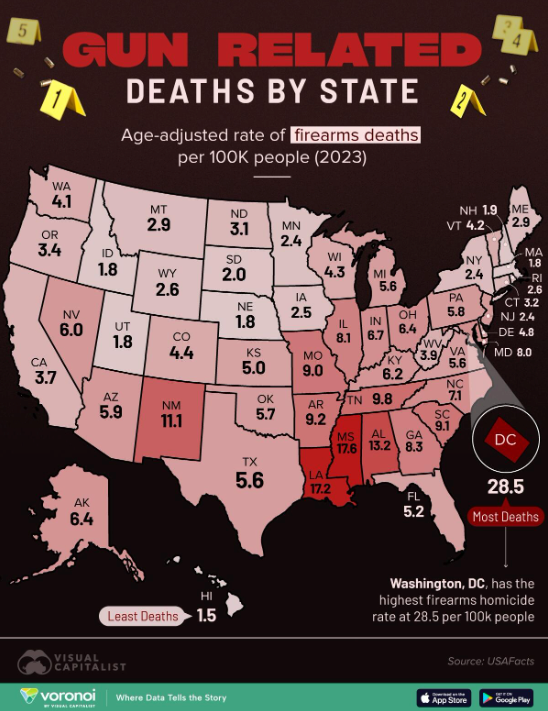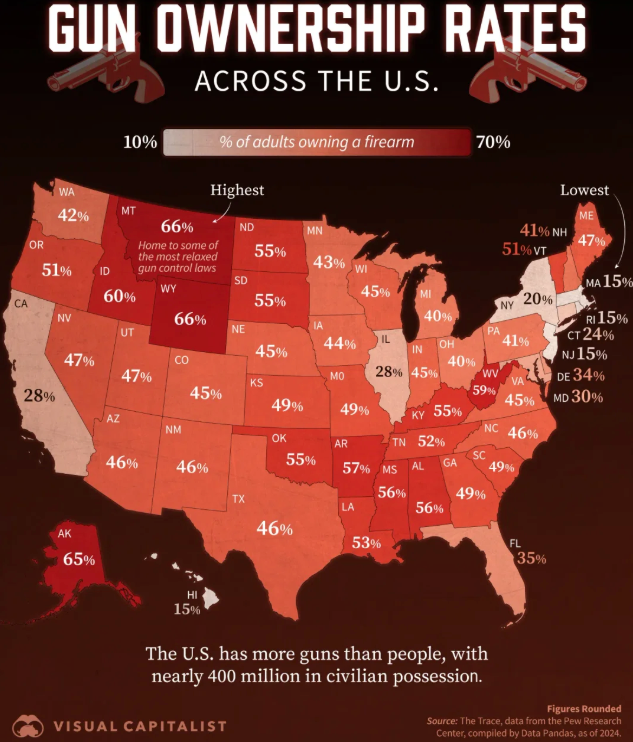Firearm Fact Board
- Brad Parker

- Jun 14, 2025
- 5 min read
Updated: Jun 16, 2025

When we are teaching courses we find some people are fascinated with statistics.
There can be some sense of certainty that statistics seem to deliver. In other words numbers, trends, and charts, can paint a picture which can help make sense of the chaos and misinformation out there. However, we have discussed in other posts how statistics can be deceiving.
We are making sure that we use firearm facts which can cite the source for the statistics we use in different posts and on our TSG Defense YouTube channel. To that end, this post is going to be a repository for statistics and sources. Often we find sources for studies and statistics and we want to capture them here so we can cite them in later posts and videos. As a visitor here, you should feel free to use them yourself.
The facts here are not necessarily sorted in any particular fashion. And new or interesting citations will be added periodically as we move forward. Again, in no certain order. This page is really serving as a repository for facts as we capture them.
Firearm Facts
Firearm Defensive Uses
31.1% of all gun owners have used a firearm to defend themselves or their property, often on more than one occasion. 2021 National Firearms Survey, published by William English of the McDonough School of Business at Georgetown University.
“Handguns are the most common firearm employed for self-defense (used in 65.9% of defensive incidents), and in most defensive incidents (81.9%) no shot was fired. Approximately a quarter (25.2%) of defensive incidents occurred within the gun owner’s home, and approximately half (53.9%) occurred outside their home, but on their property. About one out of ten (9.1%) defensive gun uses occurred in public, and about one out of twenty (4.8%) occurred at work.” 2021 National Firearms Survey, published by William English of the McDonough School of Business at Georgetown University.
Mass Shootings
94% of mass shooting murders occur in “gun-free” zones. This data was collected from murders that occurred from 1950 to 2019; in these, “mass shooting” is defined as an event with four or more victims killed. Gun-free zones generally allow the police to carry firearms in them, but civilians are usually prohibited from doing so. Source:Crime Prevention Research Center
Mass shootings accounted for about 0.13% of all deaths with guns and 0.34% of murders in which guns were used between 1989 and 2014. A “mass shooting” is defined as involving three or more victims that were not romantically related using existing state and federal law-enforcement statistics. "The Impact of Mass Shootings on Gun Policy,” published by the Harvard Business School.
Gun Buyers
Since 2019, nearly half of first-time gun buyers were women; from 2019 to January 2022, 3.5 million women became first time firearm owners in the U.S., according to the National Firearms Survey.
During the first half of 2020, the highest overall firearm sales increase came from black men and women, a 58.2% increase, according to a 2020 National Sports Shooting Foundation Firearms Retailer Survey.More than 8.4 million people bought their first gun in 2020 and at least 5.4 million people purchased a firearm for the first time in 2021. “That also reflected hikes in African-American, Hispanic-American and Asian-American gun buyers. More than 3.2 million Americans bought their first firearm within the first six months of 2021.” National Shooting Sports Foundation (NSSF)
“Federal data suggests that gun sales have risen in recent years, particularly during the pandemic. In 2020, the number of monthly federal background checks for gun purchases was consistently at least 20% higher than in the same month in 2019, according to the FBI’s National Instant Criminal Background Check System. The largest comparative percentage point difference occurred in July 2020, when about 3.6 million background checks were completed, 44% more than were conducted in July 2019.” Pew Research
Retail/Gun Shows and Crime
“Fewer than 1 in 50 (less than 2%) of all prisoners had obtained a firearm from a retail source and possessed, carried or used it during the offense for which they were imprisoned.” Over half these criminals stole their firearms, while 43% bought their guns through illegal means.U.S. Department of Justice (DOJ), Office of Justice Programs, Bureau of Justice Statistics (2016)
“Among prisoners who possessed a firearm during their offense, 0.8% obtained it at a gun show.” DOJ
Firearm Purchases/Reasons for Buying
In 2021, 88% of U.S. gun owners surveyed cited protection against crime as the reason they owned a firearm—up from 67% in 2005. Gallup
Related: Taking Self-Defense into Your Own Hands: The Rising Concern Over Crime and Personal Protection
Firearm Transfer Holding Times/Wait Periods
The average time between when a firearm was sold at retail and when it was confiscated at a crime scene in the U.S. in 2020 was 7.01 years. Bureau of Alcohol, Tobacco, Firearms and Explosives (ATF)
Firearm Concealed Carry Permits
Alabama on Jan. 1, 2023, became the 25th state to allow people to carry a concealed handgun without a state permit that requires a background check.
“Concealed handgun permit holders are extremely law-abiding. In Florida and Texas, permit holders are convicted of firearms-related violations at one-twelfth of the rate at which police officers are convicted.” Crime Prevention Research Center (CPRC)
Revocation rates of concealed carry permits (cancelling or revoking the permit-holder's permit) in 20 states is low. In Arizona, the rate is just .009. (CPRC).
Firearm Suppressors/Silencers
“Even the most-effective suppressors, on the smallest and quietest calibers (.22 LR) reduce the peak sound level of a gunshot to between 110-120 dB. To put that in perspective, according to the National Institute for Occupational Safety and Health (NIOSH), that is as loud as a jackhammer (110 dB) or an ambulance siren (120 dB). For normal caliber handguns and rifles, suppressed sound levels routinely exceed 130 dB, just shy of [the] ‘hearing safe’ threshold of 140 dB.” American Suppressor Association
Firearm Accidents
"From 2008 to 2018, unintentional firearm-related fatalities declined by 22.6%." National Safety Council’s Injury Facts
Firearm Suicides
While suicides account for 60% of all gun deaths in the United States, “by and large American adults are unaware of this. In our survey, only one-fourth of Americans correctly answered that gun deaths by suicide outnumber deaths resulting from mass shootings, murders other than mass shootings, and accidental gun discharges.” APM Research (2019)
One-third of American adults believe that “murders other than mass shootings” is the top cause of death by firearms, while one-quarter think mass shootings are actually the leading cause of gun-related deaths. APM Research (2019)
Children & Gun Violence
Following the Christian school murders by Audrey Hale in Mar. 2023, Nashville Mayor John Cooper said, "And the leading cause of kids death now is guns and gunfire, and that is unacceptable." That statement is not even remotely true. Below are rates of death and causes:


Deaths of Children aged 1-4 years
Accidents (unintentional injuries)
Congenital malformations, deformations and chromosomal abnormalities
Assault (homicide)
Deaths of Children aged 5-9 years
Accidents (unintentional injuries)
Cancer
Assault (homicide)
Deaths of Children aged 10-14 years
Accidents (unintentional injuries)
Intentional self-harm (suicide)
Cancer
Firearm Related Deaths by State

Firearm Ownership Rates (U.S.)




Comments